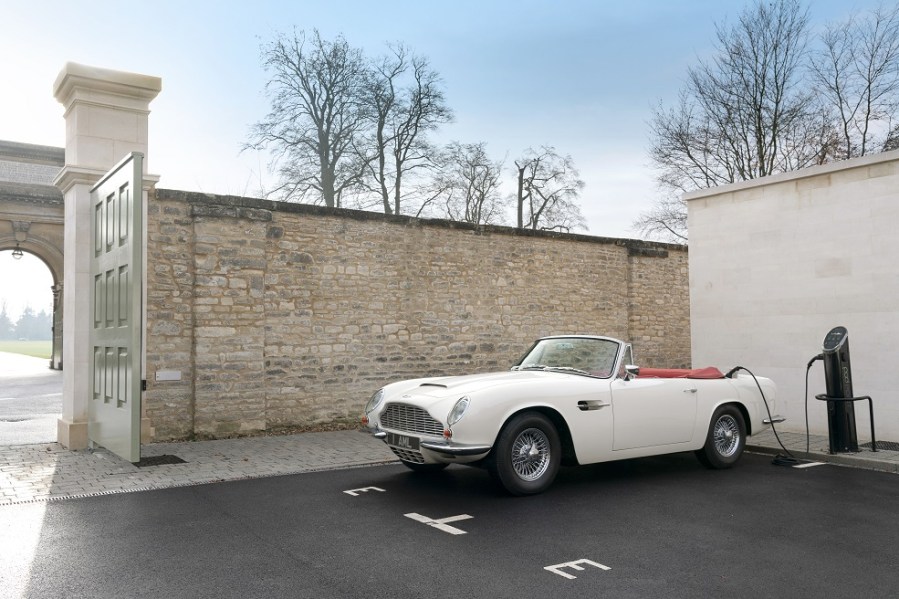Aston Martin Lagonda has joined the electric vehicle trend by developing a reversible EV powertrain for its classic vehicles that’s designed to be as sympathetic as possible to the original car.
Conceived as an integral part of the company’s wider EV strategy, the Heritage electrification concept has been led by Aston Martin Works at Newport Pagnell. Developed around a so-called “cassette” EV powertrain, the objective is to future-proof against any legislation to restrict the use of classic cars by offering a zero emissions conversion.
Using knowledge acquired by Aston Martin during the final phase development of the Rapide E and future planning of the all-new range of Lagondas, production versions of the revolutionary EV cassette will include key components from the Rapide E programme.
The first car to receive the radical new EV powertrain is an original 1970 DB6 MkII Volante. Sitting on the original engine and gearbox mountings, the cassette is enclosed within its own self-contained cell. Umbilical cords from the power unit then feed the car’s electrical systems. Power management is operated via a dedicated screen, which is discreetly fitted to the car’s interior.

With the historical significance of these cars in mind, the cassette conversion has been designed to allow the ability to reinstate the stock powertrain if desired. It’s claimed to be world’s first reversible EV powertrain conversion, but this doubtless would be disputed be disputed by the producers of other EV conversions, not least Jaguar Land Rover, which has claimed that its E-Type Zero conversion revealed last year is fully reversible. However, it sounds like Aston Martin’s solution is less integrated, and it would therefore be easier to convert back to original.
Andy Palmer, Aston Martin Lagonda President and Group Chief Executive Officer, said of the Heritage EV concept: “We are very aware of the environmental and social pressures that threaten to restrict the use of classic cars in the years to come. Our Second Century Plan not only encompasses our new and future models, but also protects our treasured heritage. I believe this not only makes Aston Martin unique, but a truly forward-thinking leader in this field.”

Paul Spires, President of Aston Martin Works, added: “We have been looking for some time to find a way of protecting our customers’ long-term enjoyment of their cars. Driving a classic Aston Martin on pure EV power is a unique experience and one that will no doubt be extremely attractive to many owners, especially those who live in city centres. We also foresee collectors adding another dimension to their collection by commissioning EV-converted heritage cars.”
Having handled the initial concept evaluation and build of the proof-of-concept DB6 Volante, Aston Martin Works will also be responsible for completing customer Heritage EV conversions, which are expected to commence in 2019.




